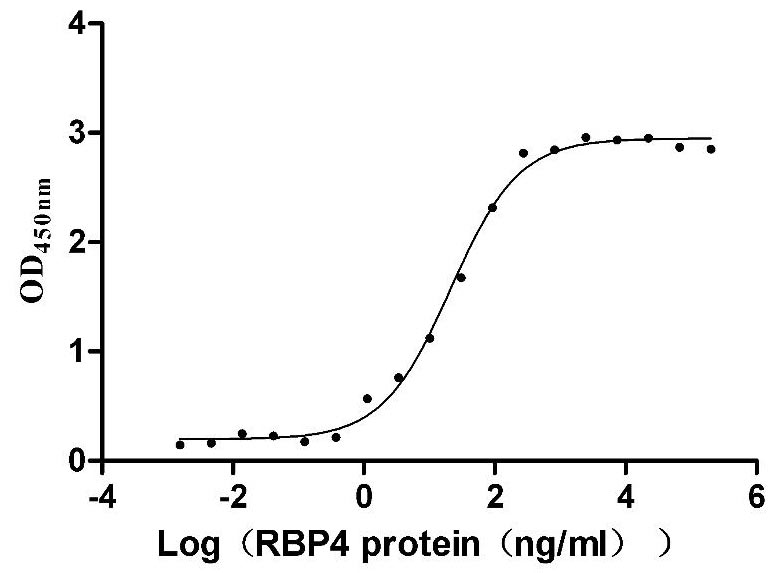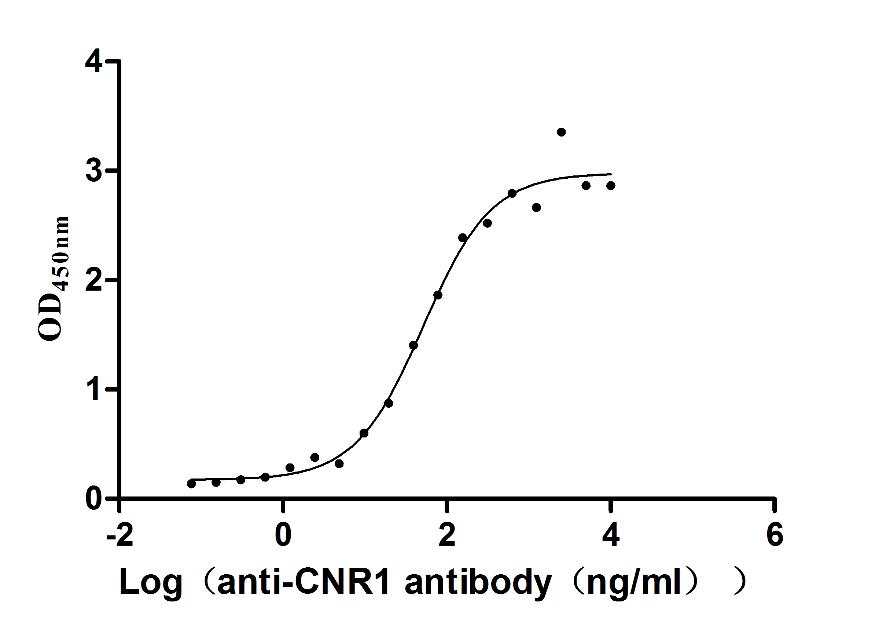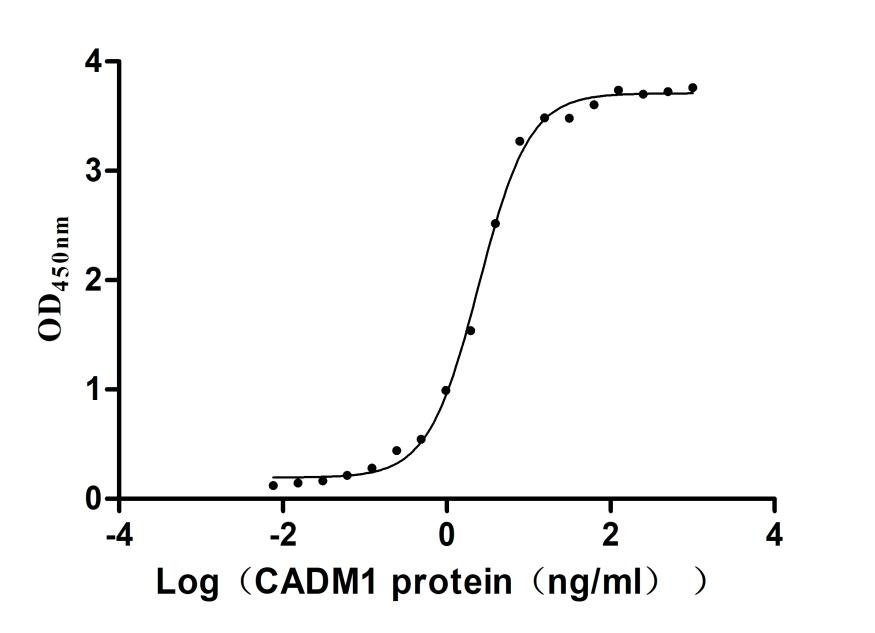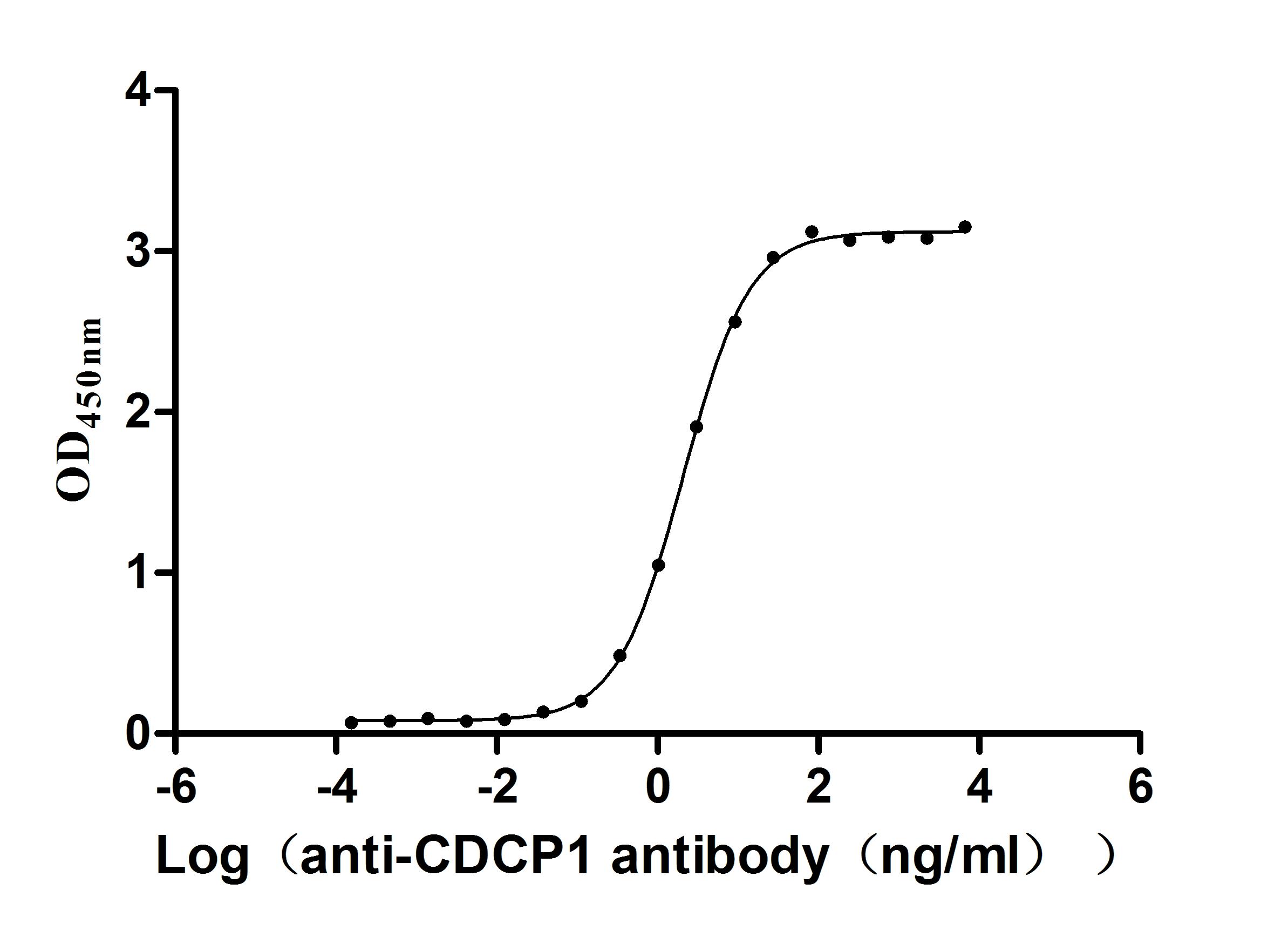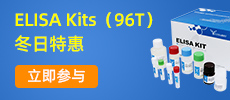Recombinant Rat CD44 antigen (Cd44), partial
-
中文名稱:Recombinant Rat CD44 antigen(Cd44), partial
-
貨號:CSB-YP004938RA1
-
規(guī)格:
-
來源:Yeast
-
其他:
-
中文名稱:Recombinant Rat CD44 antigen(Cd44), partial
-
貨號:CSB-EP004938RA1
-
規(guī)格:
-
來源:E.coli
-
其他:
-
中文名稱:Recombinant Rat CD44 antigen(Cd44), partial
-
貨號:CSB-EP004938RA1-B
-
規(guī)格:
-
來源:E.coli
-
共軛:Avi-tag Biotinylated
E. coli biotin ligase (BirA) is highly specific in covalently attaching biotin to the 15 amino acid AviTag peptide. This recombinant protein was biotinylated in vivo by AviTag-BirA technology, which method is BriA catalyzes amide linkage between the biotin and the specific lysine of the AviTag.
-
其他:
-
中文名稱:Recombinant Rat CD44 antigen(Cd44), partial
-
貨號:CSB-BP004938RA1
-
規(guī)格:
-
來源:Baculovirus
-
其他:
-
中文名稱:Recombinant Rat CD44 antigen(Cd44), partial
-
貨號:CSB-MP004938RA1
-
規(guī)格:
-
來源:Mammalian cell
-
其他:
產(chǎn)品詳情
-
純度:>85% (SDS-PAGE)
-
基因名:
-
Uniprot No.:
-
別名:Cd44; CD44 antigen; Extracellular matrix receptor III; GP90 lymphocyte homing/adhesion receptor; HUTCH-I; Hermes antigen; Hyaluronate receptor; Phagocytic glycoprotein 1; PGP-1; Phagocytic glycoprotein I; PGP-I; CD antigen CD44
-
種屬:Rattus norvegicus (Rat)
-
蛋白長度:Extracellular domain
-
蛋白標(biāo)簽:Tag?type?will?be?determined?during?the?manufacturing?process.
The tag type will be determined during production process. If you have specified tag type, please tell us and we will develop the specified tag preferentially. -
產(chǎn)品提供形式:Lyophilized powder
Note: We will preferentially ship the format that we have in stock, however, if you have any special requirement for the format, please remark your requirement when placing the order, we will prepare according to your demand. -
復(fù)溶:We recommend that this vial be briefly centrifuged prior to opening to bring the contents to the bottom. Please reconstitute protein in deionized sterile water to a concentration of 0.1-1.0 mg/mL.We recommend to add 5-50% of glycerol (final concentration) and aliquot for long-term storage at -20℃/-80℃. Our default final concentration of glycerol is 50%. Customers could use it as reference.
-
儲存條件:Store at -20°C/-80°C upon receipt, aliquoting is necessary for mutiple use. Avoid repeated freeze-thaw cycles.
-
保質(zhì)期:The shelf life is related to many factors, storage state, buffer ingredients, storage temperature and the stability of the protein itself.
Generally, the shelf life of liquid form is 6 months at -20°C/-80°C. The shelf life of lyophilized form is 12 months at -20°C/-80°C. -
貨期:Delivery time may differ from different purchasing way or location, please kindly consult your local distributors for specific delivery time.Note: All of our proteins are default shipped with normal blue ice packs, if you request to ship with dry ice, please communicate with us in advance and extra fees will be charged.
-
注意事項(xiàng):Repeated freezing and thawing is not recommended. Store working aliquots at 4°C for up to one week.
-
Datasheet :Please contact us to get it.
相關(guān)產(chǎn)品
靶點(diǎn)詳情
-
功能:Cell-surface receptor that plays a role in cell-cell interactions, cell adhesion and migration, helping them to sense and respond to changes in the tissue microenvironment. Participates thereby in a wide variety of cellular functions including the activation, recirculation and homing of T-lymphocytes, hematopoiesis, inflammation and response to bacterial infection. Engages, through its ectodomain, extracellular matrix components such as hyaluronan/HA, collagen, growth factors, cytokines or proteases and serves as a platform for signal transduction by assembling, via its cytoplasmic domain, protein complexes containing receptor kinases and membrane proteases. Such effectors include PKN2, the RhoGTPases RAC1 and RHOA, Rho-kinases and phospholipase C that coordinate signaling pathways promoting calcium mobilization and actin-mediated cytoskeleton reorganization essential for cell migration and adhesion.
-
基因功能參考文獻(xiàn):
- The findings indicate for the first time that regulation of Rac1 activity is responsible for hyaluronidase and CD44-driven morphological changes of astrocytes. PMID: 27163367
- results suggest that the AT1 receptor is involved in development of hypertension and cardiac fibrosis. Selective activating ACE2/eNOS and inhibiting CD44/HA interaction might be considered as the therapeutic targets for attenuating Ang II induced deleterious cardiovascular effects PMID: 27085217
- Results define a clinically relevant role for signaling by the hyaluronan receptor, CD44, in increased responsiveness to mechanical stimulation PMID: 26996509
- Peptide inhibitors of CD44v6 isoforms block tumor growth and metastasis in several independent models of pancreatic cancer. PMID: 26597578
- Expression of CD44 followed the same temporal pattern as hyaluronic acid deposition in a bladder regeneration model. PMID: 25253654
- Results indicate a novel role for CD44 as an essential regulator of dendritic arbor complexity in both health and disease. PMID: 25300795
- Data show that hyaluronan receptor CD44 undergoes co-internalization with hyaluronan endocytosis. PMID: 25733665
- release of the CD44 intracellular domain into the cytoplasm of cells such as chondrocytes exerts a competitive or dominant-negative effect on the function of full-length CD44. PMID: 23884413
- CD44 is a key molecule in the migration of OPCs toward the focal inflammatory demyelinated lesion induced by zymosan PMID: 23280959
- after experimental TBI, hippocampal neurons grew well on an OPN substrate with growth comparable to that seen on laminin, but showed a higher degree of primary neurites; growth on OPN was mediated through beta1 intregrins and CD44. T PMID: 22692550
- Upregulation of hyaluronan and its binding receptors CD44 and LYVE-1 are involved in interstitial fibrosis in chronic cyclosporine-induced renal injury. PMID: 20470282
- Results describe how CD44 regulates the motility and invasive growth of B35 neuroblastoma cells into a hyaluronan-rich environment. PMID: 20056122
- Data show that Hyal2, through direct interactions with CD44 and possibly some pericellular hyaluronidase activity suppresses the formation or the stability of the glycocalyx, modulates ERM-related cytoskeletal interactions, and diminishes cell motility. PMID: 19783662
- Data show that neither CD44v nor exosomes alone suffice for (pre)metastatic niche formation. PMID: 19794968
- role of colocalization with osteopontin in migration, cell fusion, and resorption in osteoclasts PMID: 12162503
- Data show that CD44 antigen is upregulated on all migrating cells and on newly formed blood vessels at the onset of the foreign body reaction. PMID: 12579564
- Microarray analysis and RNA silencing link fra-1 to the expression of this antigen and c-met expresssion in mesothelioma. PMID: 12839939
- Cd44 variant isoforms associate with tetraspanins and EpCAM. PMID: 15212938
- Cd44 expression identifies astrocyte-restricted precursor cells. PMID: 15531362
- The helper and cytotoxic subsets of T cells, as well as B cells, display the increased expression of CD44, intercellular adhesion molecule 1 and lymphocyte function associated antigen 1 PMID: 15624701
- migration of rat hepatic stellate cells requires hyaluronic acid and CD44v6 PMID: 15691832
- NCoR, GAF, and TR interact with the CD44 negative T(3)-responsive element to enhance basal transactivation, whereas T(3) induces the remodeling of chromatin structure for repression PMID: 15701601
- role of CD44-hyaluronan interaction in mesenchymal stem cell migration in the extracellular matrix PMID: 16306150
- CD44 is a specific marker of small hepatocytes. PMID: 16580085
- CD44 is probably involved in early leukocyte infiltration, in tubular regeneration, and in macrophage activity in the rat kidney after ischemia/reperfusion injury. PMID: 16786159
- The expression pattern of CD44 was studied in the rat testis following ischemia/reperfusion (I/R) injury to elucidate the possible role of the CD44 adhesion molecule in acute experimental testicular torsion. PMID: 16891795
- The association of ezrin, radixin and moesin proteins to the coreceptor is absolutely required to mediate the hepatocyte growth factor-dependent activation of Ras by the guanine nucleotide exchange factor Sos. PMID: 17065554
- CD44 has a pivotal role in the trans-endothelial migration of NPCs across brain endothelial cells PMID: 18450824
- CD44-hyaluronan interaction, by enhancing biliary proliferation, may play a pathogenic role in the development of cholestatic liver diseases. PMID: 18556418
- Data show that the rapid and transient induction of CD44 occurrs in activated microglia/macrophages following transient forebrain ischemia. PMID: 18638458
- CD44 upregulation in neurons is affected by local chondroitin sulfate proteoglycan expression. PMID: 18694596
- CD44 variant isoforms promote metastasis formation by a tumor cell-matrix cross-talk that supports adhesion and apoptosis resistance. PMID: 19208744
- CD44 may play an important role in the development of airway inflammatory in asthma. PMID: 19222954
- Importantly, TSC activation upon ALS-like neurodegeneration results in significant increase in molecular proximity of CD44 and ErbB3, which may have an impact on glial plasticity at the NMJ. PMID: 19385056
- Results suggest that Tra2beta may regulate cellular oxidative response by changing alternative splicing of distinct genes including CD44. PMID: 19439532
顯示更多
收起更多
-
亞細(xì)胞定位:Cell membrane; Single-pass type I membrane protein. Cell projection, microvillus.
-
數(shù)據(jù)庫鏈接:
UniGene: Rn.1120
Most popular with customers
-
Recombinant Mouse GDNF family receptor alpha-like (Gfral), partial (Active)
Express system: Mammalian cell
Species: Mus musculus (Mouse)
-
Recombinant Human IGF-like family receptor 1 (IGFLR1), partial (Active)
Express system: Mammalian cell
Species: Homo sapiens (Human)
-
Recombinant Human C-X-C chemokine receptor type 4 (CXCR4)-VLPs (Active)
Express system: Mammalian cell
Species: Homo sapiens (Human)
-
Recombinant Mouse Transthyretin (Ttr) (Active)
Express system: Mammalian cell
Species: Mus musculus (Mouse)
-
Recombinant Human Cannabinoid receptor 1 (CNR1)-VLPs (Active)
Express system: Mammalian cell
Species: Homo sapiens (Human)
-
Recombinant Human Cytotoxic and regulatory T-cell molecule (CRTAM), partial (Active)
Express system: Mammalian cell
Species: Homo sapiens (Human)
-
Recombinant Macaca fascicularis CUB domain containing protein 1 (CDCP1), partial (Active)
Express system: Mammalian cell
Species: Macaca fascicularis (Crab-eating macaque) (Cynomolgus monkey)


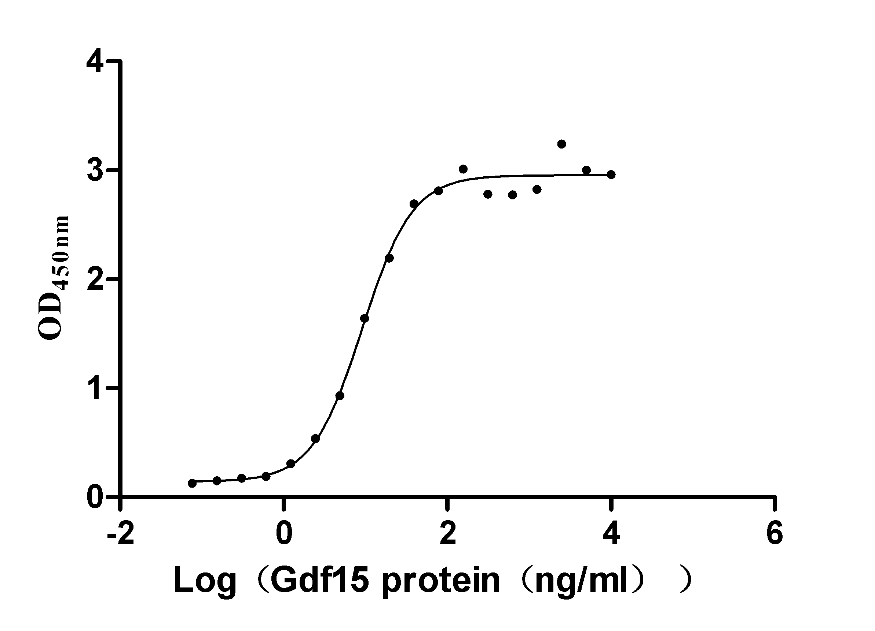
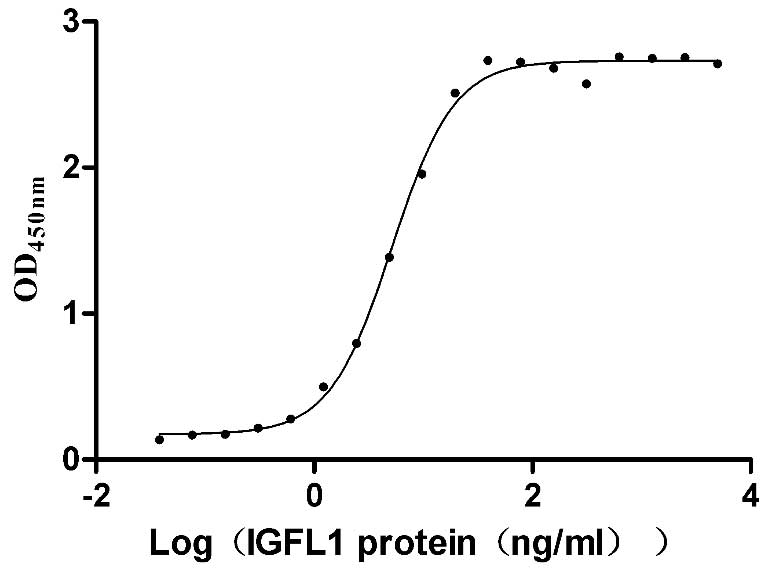
-AC1.jpg)
